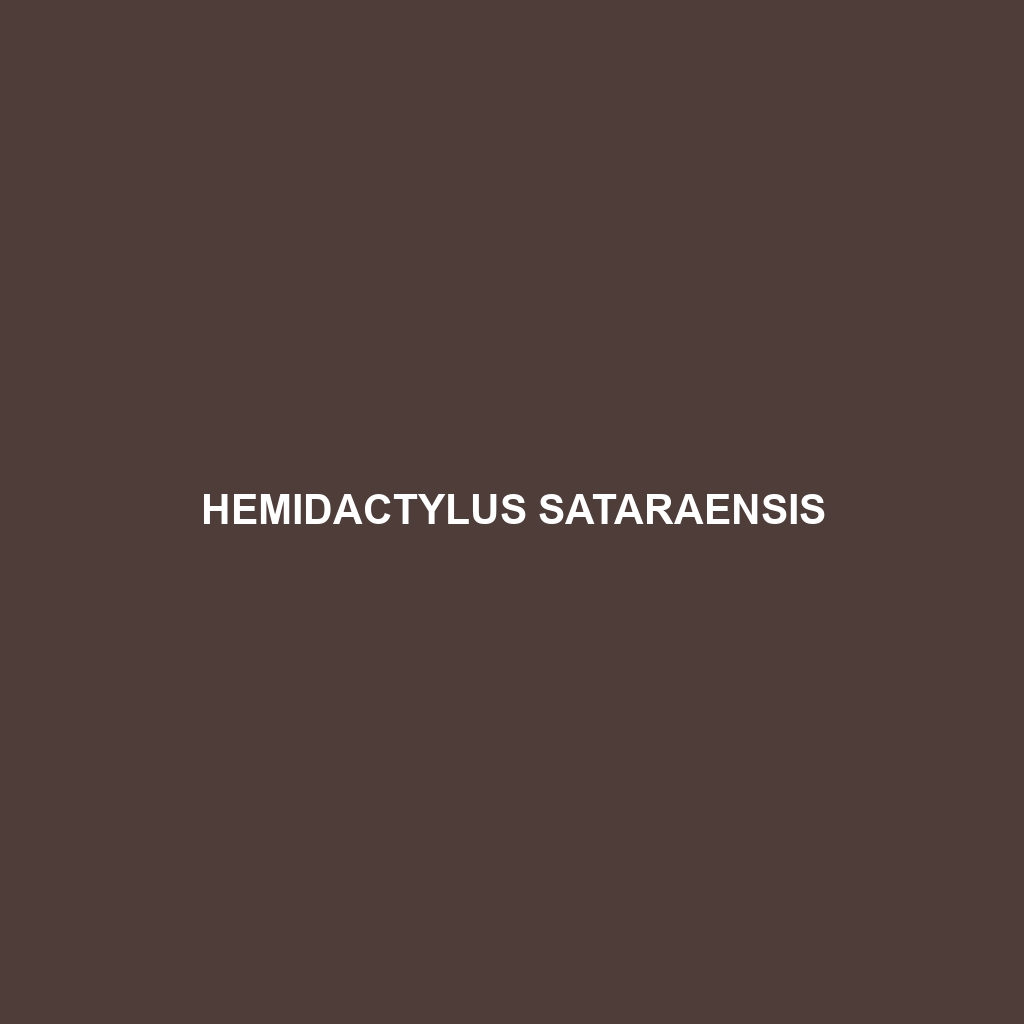Common Name
Hemidactylus sataraensis
Scientific Name
Hemidactylus sataraensis
Habitat
Hemidactylus sataraensis, commonly referred to as the Satara House Gecko, is primarily found in the humid regions of the Western Ghats in India, particularly around the Satara district. This species thrives in a variety of habitats, including tropical rainforests, deciduous forests, and agricultural areas. The humid and warm climate of these regions provides the ideal environmental conditions for their survival, particularly temperatures ranging from 20 to 30 degrees Celsius. Additionally, these geckos are often spotted near human settlements, where they can find shelter in buildings, stone walls, and tree crevices, making them an adaptable species in both wild and urban settings. Their preference for moist environments allows them to easily access the insects that make up a significant portion of their diet.
Physical Characteristics
Hemidactylus sataraensis displays distinctive physical features that make it easily identifiable among other gecko species. Typically, they measure between 7 to 10 centimeters in length, with a streamlined body well-adapted for climbing. Their skin is covered in small, granular scales, providing a rough texture that assists in gripping surfaces. The coloration varies from grey to light brown, allowing for effective camouflage among the rocks and foliage of their habitat. A notable feature includes the presence of small dark spots or bands on their backs, which further aids in blending with the forest floor. Their large, bulbous eyes are adapted for nocturnal activity, enhancing their vision during low light conditions.
Behavior
Hemidactylus sataraensis is primarily a nocturnal species, displaying most of its activity during the night. This behavior allows them to reduce predation risk and conserve moisture. During the evening hours, they emerge to hunt for insects and other small invertebrates. Socially, these geckos are generally solitary, although they can be found in close proximity to each other in favorable habitats. Mating rituals typically involve a series of head bobbing and vocalizations, which serve to attract mates. These geckos are also known for their unique ability to climb effortlessly on vertical surfaces, including smooth walls, thanks to the specialized pads on their feet that help them adhere to various surfaces.
Diet
The diet of Hemidactylus sataraensis is predominantly insectivorous, primarily consisting of a variety of insects such as crickets, moths, and various small arthropods. Their method of feeding involves active hunting, as they stalk and catch their prey using rapid movements. Occasionally, they may consume small fruits or nectar, classifying them as opportunistic feeders. This predominantly carnivorous diet is vital for their growth and reproductive health, making the availability of insects in their habitat critical for their sustenance.
Reproduction
The reproductive cycle of Hemidactylus sataraensis begins in the late spring to early summer, during which males engage in courtship displays to attract females. After mating, females lay a clutch of two eggs, which are typically deposited in hidden, moist locations to ensure their safety. The incubation period for these eggs ranges from 45 to 70 days, after which the hatchlings emerge fully formed. Newly hatched geckos are independent and begin to forage for food almost immediately. Parental care is minimal, as the adults often abandon the eggs after laying and do not provide any further assistance to the young.
Conservation Status
Currently, Hemidactylus sataraensis is not listed as endangered, vulnerable, or threatened; it is classified as a species of least concern by the International Union for Conservation of Nature (IUCN). However, habitat destruction due to urbanization, deforestation, and agricultural expansion poses potential risks to its population. Conservation efforts are essential to ensure that this species continues to thrive in its natural habitat, which is increasingly under threat from human activities.
Interesting Facts
One of the intriguing adaptations of Hemidactylus sataraensis includes its ability to regenerate its tail after losing it, a defense mechanism against predators. This regeneration can take several weeks, and while the new tail may differ in coloration and texture from the original, it allows the gecko to evade potential threats. Furthermore, these geckos exhibit a fascinating behavior known as “limb autotomy,” where they can shed a leg if captured, which can aid in escaping from predators. Their adaptable nature allows them to thrive in various environments, including areas heavily influenced by human presence.
Role in Ecosystem
Hemidactylus sataraensis plays a significant role in its ecosystem as both a predator and a prey species. By feeding on insects, they help regulate insect populations, contributing to pest control in agricultural areas and natural habitats. Conversely, they serve as a food source for larger predators such as birds, snakes, and mammals. This establishes them as a key component of the food web within their environment. Additionally, their activity in consuming pests can aid in maintaining ecological balance, demonstrating their importance in sustaining a healthy ecosystem.
